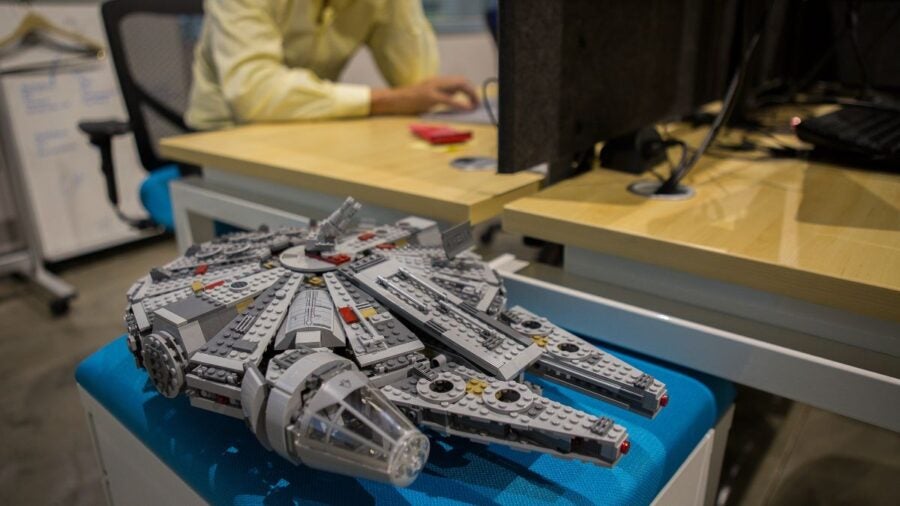
Rollbacks on remote working are in full force. When Zoom – one of the businesses that profited the most from the homeworking boom – asked staff to come into the office two days a week, many saw it as a signal that the all-remote working life was coming to an end for those with more traditional office jobs.
Since then, HSBC, Lloyds and Amazon have all updated their hybrid-working policies in an effort to get people back to the workplace. But employees at many firms have been quick to voice their opposition to proposals that require them to work two or three days a week in the office. Elsewhere, LGBTQ+ dating app Grindr saw its staff quit en masse after issuing an ultimatum (although there are also other staff issues going on at the company).
In a bid to stave off employee dissent, which has regularly arisen in response to return-to-office mandates, some businesses have developed novel ways to make the workplace a desirable place to be. And the instigators of these creative solutions claim their efforts are paying dividends.
1. Doggy day care
One such business is UAP, a Manchester-based door hardware supplier. After several staff purchased lockdown puppies during the pandemic, the company decided to offer a day care facility for its staff and their new canine companions.

This has involved converting an area of its offices and recruiting a full-time dog-minder to look after the pets. “What matters to our team matters to us,” says UAP content marketing executive, Wendy Rushton. “Dogs are members of the family for many of our employees and have helped them through a tough time over the past two years, so this is just one of the ways we’re helping them transition back to the workplace.”
She claims that the introduction of the facility has had a “remarkable impact” on office attendance – which has gone from being completely remote, to 90% full-time office attendance. “We attribute much of this success to the presence of our doggy day care programme,” Rushton adds.
2. Art galleries and Lego libraries
Some businesses are also flexing their artistic muscles in an effort to make their workplaces more attractive. Artiq, an agency that leases artwork to commercial clients, has more than doubled its size since the pandemic in order to meet growing demand, going from a team of 15 to 40.
Artiq’s clients are now renting artwork to display throughout the workplace, rather than just having it in the foyer (as they did previously) to try and draw people back into the office, according to its CEO Patrick McCrae. “We’ve seen a huge uptick in clients wanting to engage their teams by letting them choose the art so they have a greater sense of ownership of the space,” he says.
Clients are letting staff choose the art so they have a greater sense of ownership of the space
The inclusion of art in the workplace has also been shown to have an impact on employees’ perceptions of the office. Research from Brookfield Properties found that those with artfully decorated offices are 42% more likely to prefer their office to their home. This has been aided by a change in perception of Artiq’s services, with clients increasingly viewing office artwork as a benefit in the same way they would gym memberships, health insurance or free food, according to McCrae.
Elsewhere, Swindon-based agency Bacon Marketing has seen employees returning to the office for a more playful reason. Its creation of a Lego library – where staff can swap sets of the popular brick-building toy that is increasingly popular with adults – was first used to improve the mental health of its employees.
However, the business found that the policy also attracted people to visit the office more frequently to collect new Lego sets, which CEO Phil Bacon says has made his ask for people to be in the office two days a week more bearable for some.
3. Sushi cooking classes
Food is also a popular method for businesses to coax staff into HQ; 45% of employees surveyed by recruitment specialists Hays stating that a subsidised lunch would encourage them to leave their home office. Some businesses are now taking this idea further, according to Alexandra Kafka, founder of workplace wellbeing platform Oxyzn.
She claims that one client – a large tech company with offices in the UK – recently invited a sushi chef into its offices to host a cookery class. The business was glad of the impact it had on office attendance, despite the high cost of offering the one-off perk. Another of Oxyzn’s clients in the legal sector has introduced a rotating line-up of chefs, which cook food from different cuisines once a week, as part of its efforts to coax hybrid workers through its office doors.
The employee wellbeing platform has also bee involved in organising in-office pottery classes, baking sessions, comedy nights and rooftop cinemas as strategies to engage and motivate employees to return to the office.
“HR leaders are desperately trying to find solutions to incentivize their workforce to spend more days in the office,” Kafka says. “Now, companies are even considering outside-of-the-box ideas just to get people to come back.”
4. Yoga Thursdays and fitness Fridays
Another business that has shirked the mandated return is Aer Studios, a creative agency based near Bath. After surveying its employees, it found that many wanted the office to be a place to improve their wellbeing, as well as to do productive work.
In response, the business has been bringing in a personal trainer during office hours on Mondays and Fridays – the two days where office attendance was at its lowest – to help address some of the physical wellness challenges its staff highlighted in the survey.
We’re designing an experience people want to leave their home and come to work for
Yoga sessions are also held in the office space on a Thursday, free breakfasts are provided on Fridays and mindfulness coaching sessions have also been provided. “While people were reluctant to come into the office after the pandemic, people had no real cadence to the week,” says Aer Studios managing director Tom Harber. “Now we have this set of specific milestones throughout the week via the personal training and team breakfasts, which give everyone the chance to catch up.”
Since making these changes, the average number of days staff are spending in the office has increased from once or twice a week to three, with a growing proportion doing five-day weeks in the office. “We’re hoping to design an experience that people genuinely want to leave their home to come to work for,” Harber adds.
And the business has one more unique reason for employees to attend the office in person. Aer Studio’s is located two minutes away from Real World Studios, Peter Gabriel’s recording studio complex that has hosted artists such as Beyoncé, Harry Styles and Arctic Monkeys. “We often see a group of cars rock up and wonder who might be in them,” Harber says. “We’re often caught curtain twitching because you can almost see into the studios from our office.”
Although not every office can be located in close proximity to a world-famous recording studio, these examples demonstrate that finding new and creative reasons for staff to come into the office can positively influence office attendance figures, while avoiding employee backlash.

Rollbacks on remote working are in full force. When Zoom – one of the businesses that profited the most from the homeworking boom – asked staff to come into the office two days a week, many saw it as a signal that the all-remote working life was coming to an end for those with more traditional office jobs.
Since then, HSBC, Lloyds and Amazon have all updated their hybrid-working policies in an effort to get people back to the workplace. But employees at many firms have been quick to voice their opposition to proposals that require them to work two or three days a week in the office. Elsewhere, LGBTQ+ dating app Grindr saw its staff quit en masse after issuing an ultimatum (although there are also other staff issues going on at the company).
In a bid to stave off employee dissent, which has regularly arisen in response to return-to-office mandates, some businesses have developed novel ways to make the workplace a desirable place to be. And the instigators of these creative solutions claim their efforts are paying dividends.





